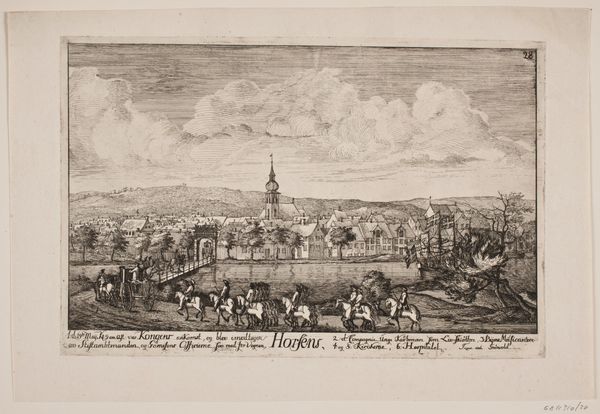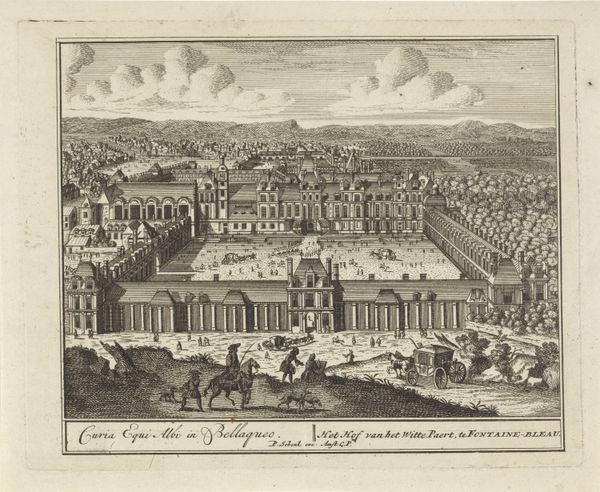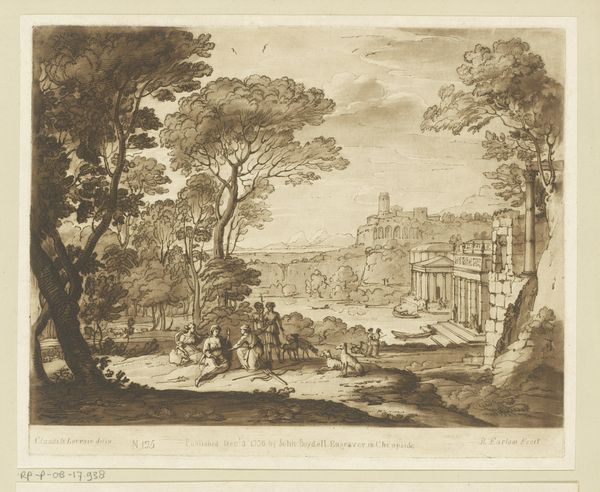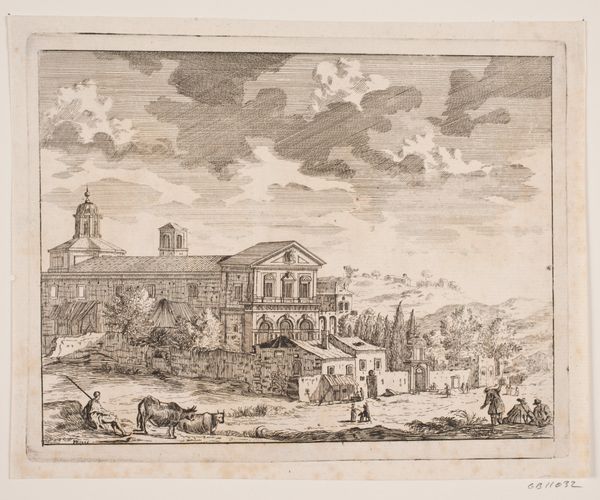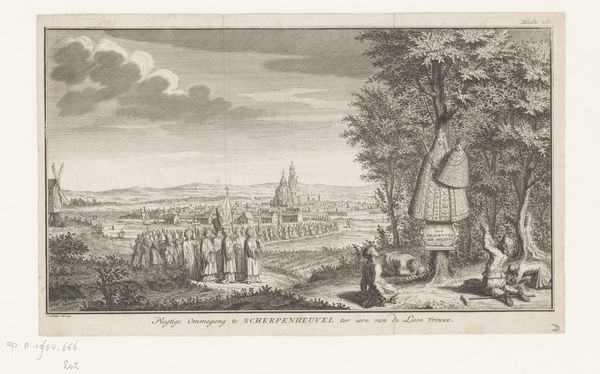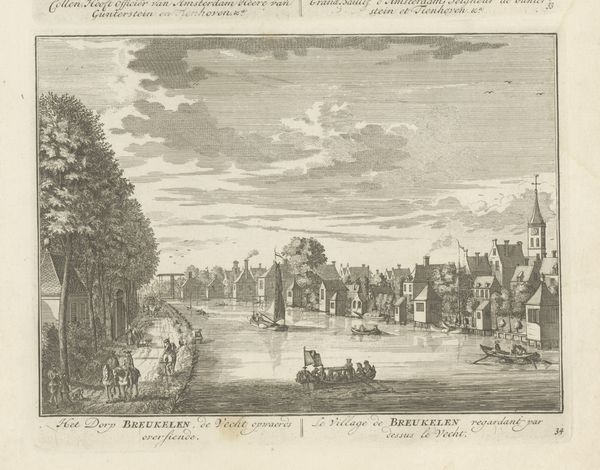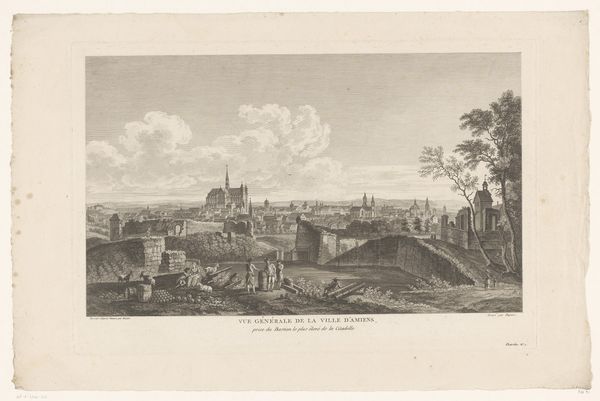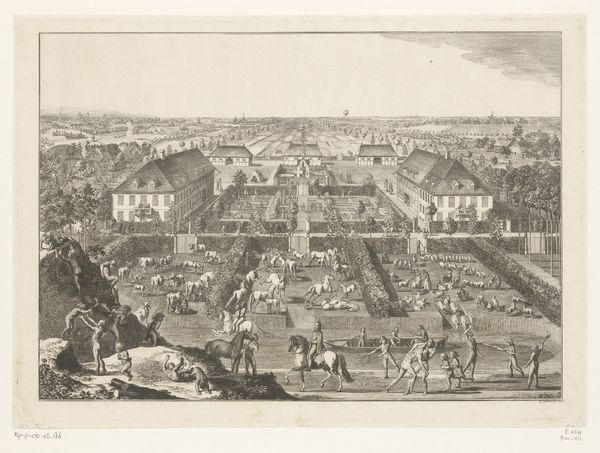
Gezicht op het Paleis van Versailles van de zijde van de brede allée 1742 - 1801
0:00
0:00
Dimensions: height 316 mm, width 409 mm
Copyright: Rijks Museum: Open Domain
Curator: We are looking at an engraving entitled "Gezicht op het Paleis van Versailles van de zijde van de brede allée," dating roughly from 1742 to 1801. It's held here at the Rijksmuseum. What are your first thoughts? Editor: My immediate reaction is that the etching appears very detailed. The materiality itself seems fascinating: this painstaking, almost mechanical process to create such a wide view. Curator: Indeed. The perspective is carefully constructed, guiding the viewer's eye from the foreground bustle toward the palatial architecture in the distance. Observe how the buildings on either side serve as framing devices, subtly emphasizing depth. Editor: And think of the engraver’s hands. Those marks were incised, weren’t they? Each tiny line meticulously cut with specialized tools? What level of apprenticeship would they require to control material, media, and the architectural details we're viewing now? It's more than mere skill. Curator: Yes, an undeniable mastery over the medium. I am drawn to the compositional elements. The contrast between the organized landscape and lively social activity— the movement almost seems calculated. Note also how these carriages are staged on the sides like elements in an oil painting. Editor: Absolutely, one cannot overlook that detail in understanding Baroque landscape sensibilities. Moreover, you have to remember that all those social and professional transactions were recorded on different paper supports depending upon what the print was made to be. From expensive art prints, displayed like this at the Rijks, or small ephemera which got used in other contexts. Paper was never neutral. Curator: Precisely, we understand the paper is far more important than we often recognize. The atmospheric perspective renders the scene with an almost dreamlike quality, which for me invokes a specific response, considering Versailles’s symbolism within that period. What do you see as the social commentary at play? Editor: I wonder about the engraver. An anonymous laborer documenting aristocratic pleasure and privilege for an audience who mostly could never enjoy it. Whose story does this print really tell when you consider all the other trades that support luxury? Curator: That gives a completely different, fascinating layer to its context, seeing the engraving process as labour documenting societal inequalities and wealth. Editor: That interplay is definitely an important one to be aware of. The contrast between who made something versus how something lives through its use and materiality. Curator: Thank you, this offers an exceptional alternative for considering it through the materiality itself! Editor: Exactly, always thinking how those different forms contribute differently is helpful to consider what can be so easily forgotten.
Comments
No comments
Be the first to comment and join the conversation on the ultimate creative platform.

